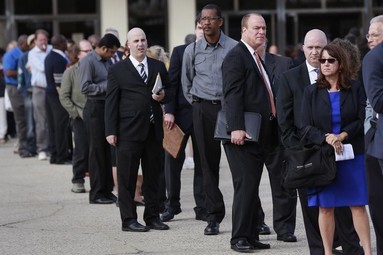Six ways Congress can make room for tax cuts that will create more jobs
Newt Gingrich,
President Reagan left us with many useful lessons in his 1989 farewell address.
Earlier this week, I related Reagan’s words to the health bill failure last Friday.
But today, a different passage from his speech caused me to rethink the current approach to tax reform.
“The way I see it, there were two great triumphs, two things that I’m proudest of. One is the economic recovery, in which the people of America created—and filled—19 million new jobs. The other is the recovery of our morale. America is respected again in the world and looked to for leadership,” Reagan said.
Reading this, I was struck with a single thought: If eight years from now, President Trump can point to 19 million (or more) new jobs, Americans – and others around the world – will regard his presidency as a success.
Job creation is the metric by which every policy must be measured. With that in mind, Reagan accelerated job growth by drastically cutting taxes. During the Contract with America we created jobs by greatly reducing the capital gains tax.
So, for the Trump administration, Republicans should stop saying we want to reform the tax system. Reforming will not create jobs on its own. We want to cut taxes and reform the system.
We should stop trying to achieve revenue neutrality and instead focus on deficit neutrality. The difference is enormous and decisive for economic growth and job creation. Revenue neutrality inevitably leads to taxes being raised to pay for taxes being cut. In the short run the tax increases always hurt more than the tax cuts help.
But there are six more steps lawmakers can take to create space for tax cuts that will drive job creation.
First, Congress must score economic growth from Obama’s finish line. The psychology of Trump’s election has created an upsurge in economic activity. Businesses are focused and hopeful about the president’s aggressive stance on deregulation, pro-American trade policy, and relentless focus on investment.

Consider the Conference Board Consumer Confidence Index, which jumped to 125.6 points this month – the highest confidence has been 17 years.
The Conference Board CEO Business Conditions Survey increased from 17 points last quarter to 60 points this quarter. The CEO Short Term Forecast hiked from 25 points to 60 points, while General CEO Confidence jumped from 50 points to 65 points.
The economy clearly has momentum. Projected over the next ten years, the new Trump economy will generate more jobs and more income than the Obama economy. Extra federal revenue from this growth should be set aside to offset a big tax cut bill. The Republicans should insist on using the last Obama projected revenue as the baseline for counting new growth for this offset. Liberal bureaucrats will try to create a new baseline absorbing the higher revenue to minimize the size of the tax cut. They should be stopped.
Second, unused federal assets should be leased or sold. This will generate non-tax revenue which could offset the cost of some of the tax cuts. Aggressive leasing of oil, gas and mineral rights combined with selling federal housing and office stock currently being mismanaged could generate billions to support tax cuts.
Third, cut spending by cutting through red tape, bureaucracy, waste, and fraud. Establishing work requirements for programs that currently promote dependency will save billions. Substantial fraud exists in our food stamps, disabilities, and welfare programs. There is an estimated $110 billion in fraud in Medicare and Medicaid alone. If we adopted an American Express-Visa-Master Card-like anti-fraud system, we could likely save more than $100 billion a year – that’s $1 trillion over a decade, plus the savings in interest on money we would no longer have to borrow. We should be able to find another $50 billion in tax cuts a year just from this zone.
Fourth, creating pro-American trade policies will clearly have positive impact on growth. This growth might not be huge statistically, but even an increase of two-tenths of 1 percent can yield billions over a decade that could be leveraged for tax cuts.
Fifth, cut taxes that have a widely agreed upon positive impact on revenue. Capital gains tax cuts have consistently yielded more federal revenue than people expected. Former Federal Reserve Chairman Alan Greenspan once testified that setting the capital gains tax to zero would generate the most revenue due to new economic growth. Repatriation of the money currently locked up overseas and adoption of a territorial tax system would yield revenue from substantial growth. And repealing the Foreign Account Tax Compliance Act would dramatically increase the number of Americans selling American goods and services overseas.
Sixth, we should have a bias for pro-growth tax reforms that have compounding, revenue generating effects. Speaker Paul Ryan’s proposal for a border transfer tax will increase American manufacturing jobs. It will also generate revenue paid for by foreign importers. Because we are still the world’s largest economy, the Ryan border transfer tax will incentivize foreign manufacturers to open factories in America. The result will be even more economic growth and future government revenue to pay for tax cuts.
This is the kind of dynamic, pro-growth, pro-jobs tax cut and reform bill that will attract lawmakers from both sides, be very popular, and create the economic and job growth we so badly need.





